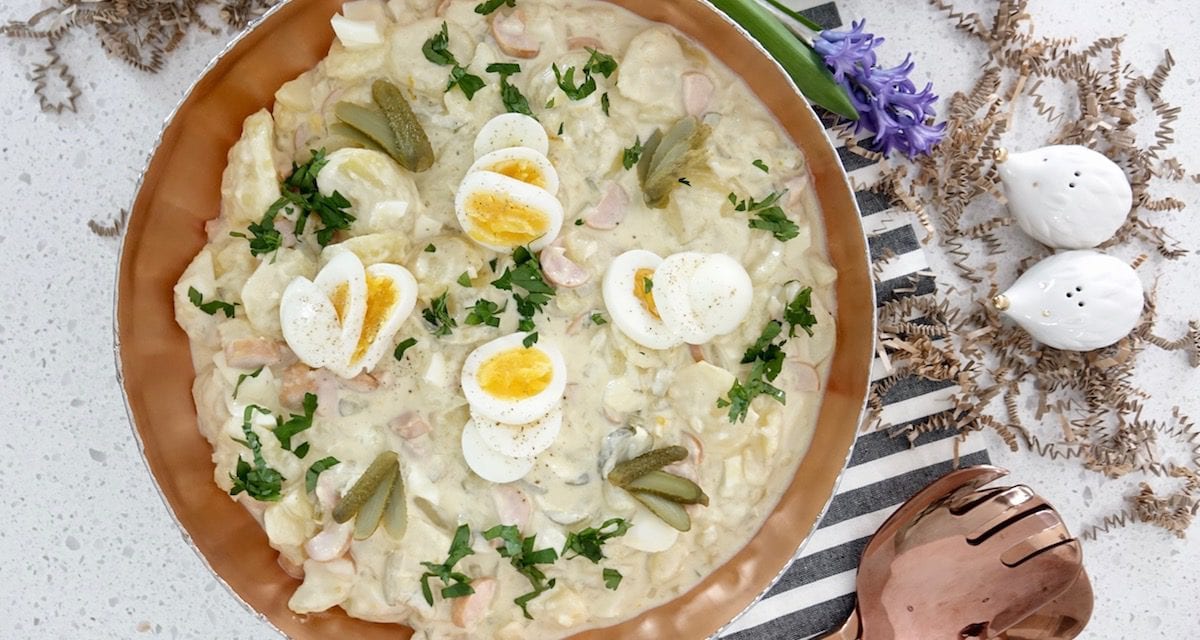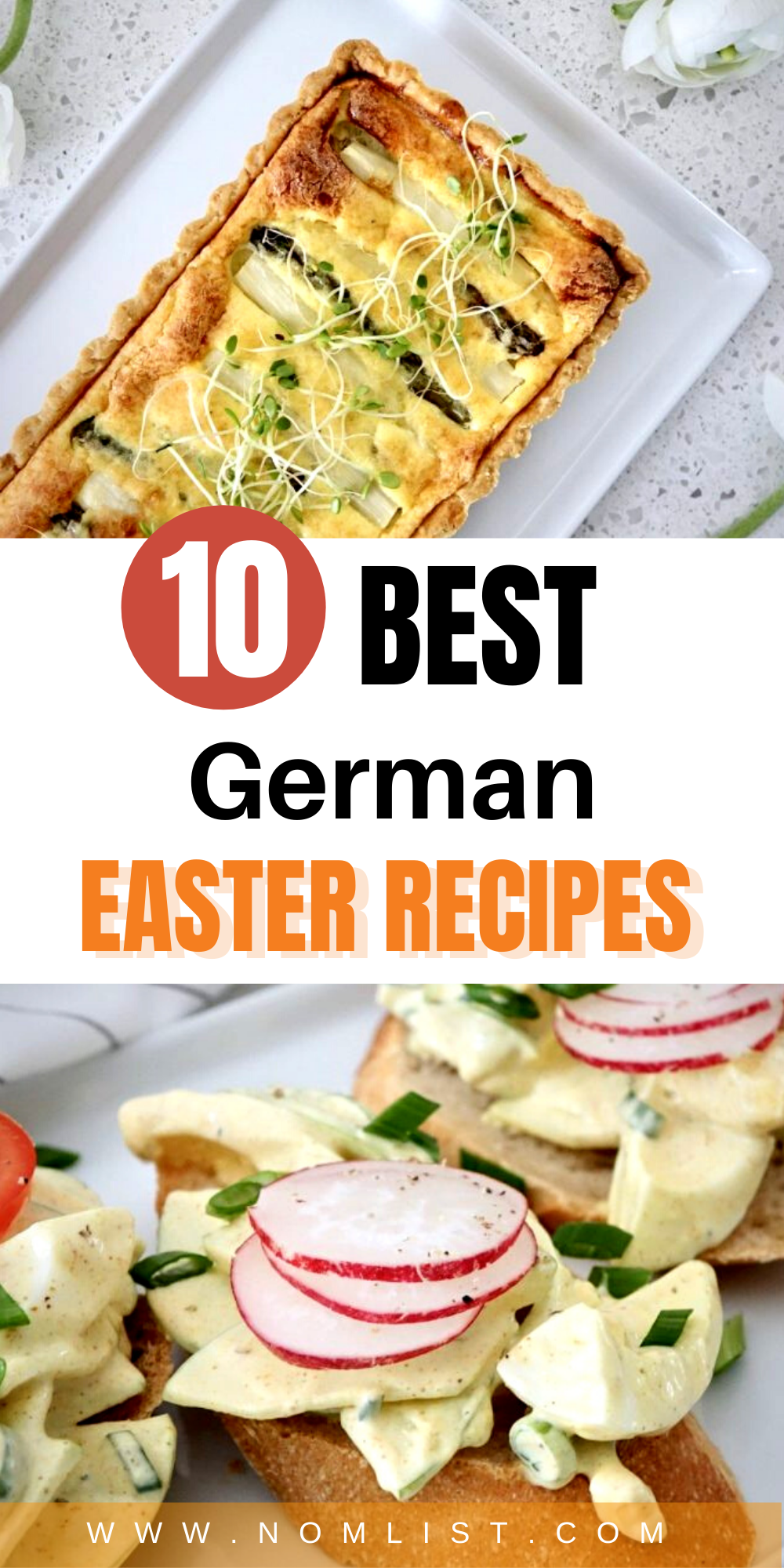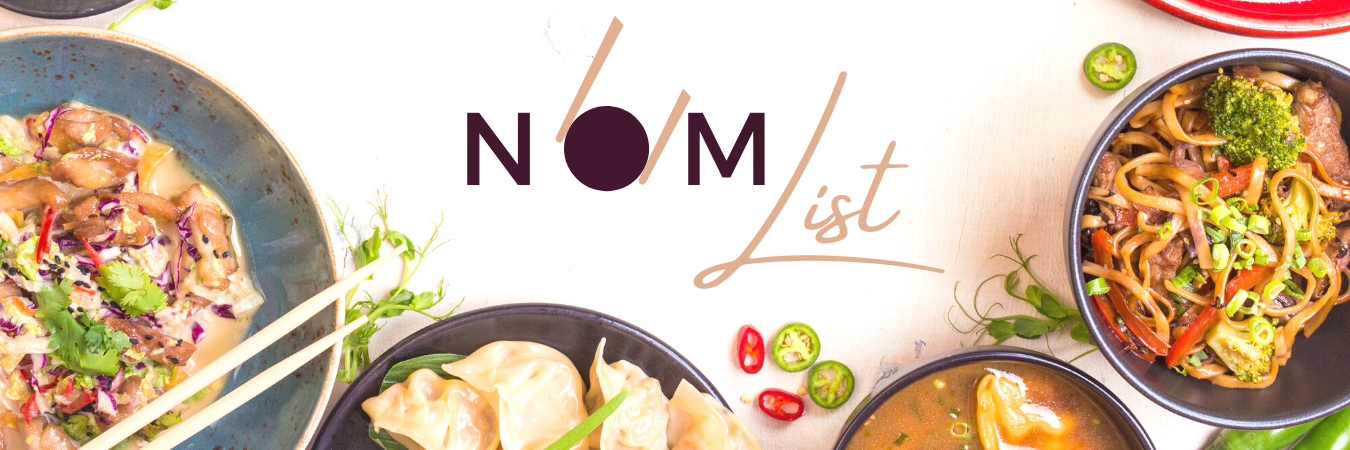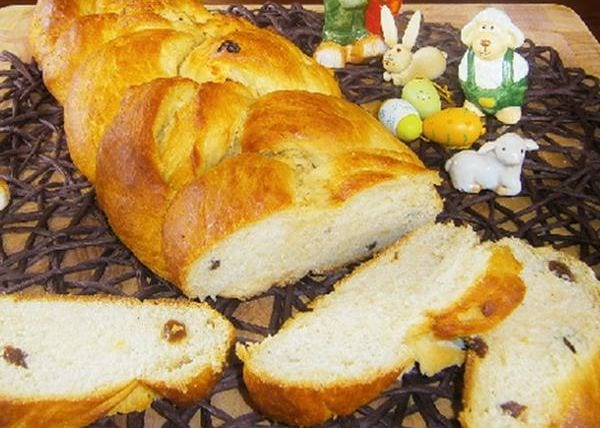
Easter is a significant holiday in Germany, with a variety of customs and traditions. A key aspect of German Easter celebrations is the delicious array of traditional foods prepared and enjoyed throughout the festivities. These dishes serve as a centerpiece for family gatherings, reunions, and events, highlighting the country’s culinary heritage during this special time.
German Easter food often features a blend of sweet and savory flavors that cater to different tastes. From satisfying main courses to delightful desserts, German cuisine offers a rich and diverse assortment of recipes that have been passed down through generations.
Some popular German Easter dishes include fish cakes with green sauce, served on Good Friday, and a variety of egg-based dishes such as Osterbrot (Easter bread) and Hefezopf (braided yeast bread). These dishes not only represent the country’s culinary skills but also hold symbolic meanings within German Easter customs. As families come together to celebrate, the familiar and comforting tastes of traditional German Easter foods connecting generations and reinforcing cultural bonds.
Traditional German Easter Foods
German Easter celebrations are steeped in rich traditions with food playing a significant role. There are several traditional dishes that grace the tables during this festive period, adding flavor and joy to the celebrations.
One popular recipe is the Osterzopf, a braided Easter bread that symbolizes the end of Lent. It is made from sweet yeast dough and can be filled with raisins, nuts, or marzipan. Osterzopf is usually enjoyed for breakfast on Easter Sunday.
Another cherished dish during Easter is Osterlamm, a cake in the shape of a lamb. The Easter lamb cake is typically made with a light, fluffy sponge and dusted with powdered sugar. The cake symbolizes the sacrifice of Jesus Christ and is a centerpiece at many tables during the Easter celebrations.
In Germany, Maundy Thursday is known as “Gründonnerstag,” and it marks the beginning of the Easter Triduum. On this day, many people consume green foods, as green represents renewal and the beginning of spring. Dishes such as spinach, green bean soup, and herb-based sauces are commonly enjoyed on this day.
On Good Friday, known as “Karfreitag” in German, families traditionally consume fish to commemorate the crucifixion of Jesus Christ. Herring salad and fish dishes like baked fish with a mustard sauce are often prepared as part of this tradition.
Easter Sunday is a day to indulge after the period of Lent, and feasting is embraced. Traditional dishes such as roast lamb, potatoes, and fresh spring vegetables are commonly served. Brandenburg lamb is a popular choice, which features diced lamb with onions, green beans, and potatoes.
Finally, Easter Monday is often marked by enjoying leftovers from the Easter feast. It is a day to relax with family and friends, and savor the flavors of these traditional German Easter foods once more.
In conclusion, German Easter food comprises a variety of traditional dishes that are enjoyed throughout the festive period. From sweet treats like Osterzopf and Osterlamm to the hearty meals shared with family and friends, these dishes hold a special place in the hearts of those who celebrate Easter in Germany.
Easter Dishes from Different Regions
In Germany, Easter is a time for families to gather and enjoy traditional dishes that vary across the different regions of the country. From East Germany to Bavaria and Northern Germany, each region has its unique Easter specialties, often incorporating seasonal ingredients such as spring herbs and vegetables.
In Northern Germany, one popular Easter dish is the Seven Herb Soup. Made with fresh herbs like chives, sorrel, and parsley, this vibrant, flavorful soup is traditionally eaten on Maundy Thursday, also known as Gründonnerstag.
Bavaria, located in the south of Germany, has its own tasty treats for the Easter season. One such example is the Osterfladen, a sweet pastry filled with a rich, creamy curd cheese mixture. The treat is often decorated with intricate designs made from dough or icing, showcasing the artistry of local bakers.
In East Germany, a popular Easter dessert is the Quarkkäulchen, small fried dumplings made from quark (a type of fresh cheese), potatoes, flour, and eggs. Enjoyed warm with a dusting of powdered sugar, these soft and delicious dumplings are a well-loved treat during the Easter celebrations.
Grün, a term for describing dishes prepared with green vegetables and herbs, is also prevalent in German Easter cuisine. An example of this is the traditional Chervil Soup, an aromatic and flavorful broth with a hint of soft licorice notes from the fresh chervil. This springtime herb offers a refreshing taste that perfectly accompanies the warming weather of the Easter season.
These regional specialties come together to create a diverse and flavorful array of Easter dishes enjoyed across Germany. No matter where you find yourself in this culturally rich nation, there is undoubtedly a tasty Easter treat waiting to be savored and shared.
Easter Cakes and Confectionery
Easter is a festive time in Germany, celebrated with an array of delightful cakes and confectionery. One popular festive cake is the Ostereier, a sweet bread typically shaped into braided wreaths decorated with colorful hard-boiled eggs. The Hefezopf, another traditional German Easter bread, is made with a rich and tender dough featuring a hint of sweetness.
Marzipan is a common ingredient in German Easter treats. During this time, it is often crafted into decorative figurines and shapes, including the well-known marzipan bunny. The German Easter Bread Bunnies are a delightful spin on sweet bread figures, combining the flavors of marzipan and yeast dough in a playful presentation.
Frohe Ostern, which translates to Happy Easter in English, is a sentiment often expressed during this holiday. Another flavor that is commonly associated with Easter in Germany is Eierlikör, also known as advocaat, a rich, creamy egg liqueur. This smooth beverage is frequently used in dessert recipes, such as the flavorful Egg Liqueur Cake, which blends Eierlikör into a moist and fluffy sponge cake.
Although Easter in Germany is typically a time for sweet treats, savory dishes such as German meatloaf can also find their way onto the holiday table. Paired with a selection of traditional cakes and festive confectionery, these dishes make for a truly memorable celebration.
Symbols and Traditions
Germany is a country rich in festive traditions, and Easter is no exception. As a predominantly Christian country, many of the customs have their roots in religious practices such as the celebration of the resurrection of Jesus. However, several German Easter traditions are also inspired by pagan customs related to fertility and the arrival of spring.
A significant event during German Easter celebrations is Palm Sunday (Palmensonntag), the Sunday before Easter, which commemorates Jesus’ triumphal entry into Jerusalem. In Germany, it is common to see people carrying blessed palm leaves or branches of local evergreen shrubs, such as box trees, in processions led by priests through towns source.
One of the more well-known German Easter traditions is the Easter egg hunt. Eggs have long been symbols of fertility and new beginnings in many cultures, and this is especially true at Easter time in Germany. Families decorate Easter eggs in various colors, with red symbolizing the blood of Christ and white signifying purity and resurrection source.
Another unique German Easter custom is the Easter Tree (Osterbaum), where families decorate branches or trees with colorful, hand-painted eggs. This tradition combines Christian symbols and pagan customs celebrating the arrival of spring.
In addition to the Easter egg hunt, Germans celebrate the Easter bonfire (Osterfeuer). This festive gathering takes place on Holy Saturday or Easter Sunday and involves burning wooden wheels or large piles of wood to symbolize the triumph of light over darkness, which can be connected to the resurrection of Jesus.
Further religious observances include Green Thursday (Gründonnerstag), which pays tribute to the Last Supper of Jesus with his disciples, and Good Friday (Karfreitag), a day of mourning and reflection on the crucifixion of Jesus.
A less known but meaningful aspect of German Easter celebrations is the Easter candle (Osterkerze). Lit in churches during the Easter vigil service, it represents the light of Christ coming into the world, and also the end of the 40 days of Lent source.
Throughout these celebrations, the abundant symbols and rituals highlight the harmony between Christian beliefs and ancient pagan customs in German culture.
Easter Day Celebration Foods
Easter Sunday, or “Ostersonntag” in German, is a special time for family gatherings and sharing a festive meal during the Easter season. Traditional German Easter foods often incorporate lamb and fish dishes, symbolizing the end of Lent and the beginning of spring.
One popular German Easter dish is Brandenburg Lamb, which consists of diced lamb with onions, served with green beans and potatoes source. This flavorful meal satisfies the family’s appetite and celebrates the Easter season.
Fish dishes are also commonly served during Easter Sunday dinner in Germany. Families often prepare a variety of fish, including herrings, salmon, and trout, as a lighter alternative to meat-based dishes. These fish dishes may be accompanied by fresh spring vegetables and vibrant herbs, highlighting the seasonal flavors and ingredients.
In addition to savory dishes, German Easter celebrations also feature sweet treats and desserts. A popular dessert is the Bunter Osterkuchen, a festive spiced carrot cake decorated with marzipan Easter eggs and sugar flowers source. This delightful cake not only satisfies the sweet tooth but also serves as a beautiful centerpiece for the Easter table.
Overall, German Easter Sunday celebrations showcase a wide array of flavorful dishes, embracing traditional ingredients and culinary customs. The Easter dinner table, filled with delicious lamb, fish, and delectable desserts, encourages families to enjoy quality time together and celebrate the joyous holiday season.
Activities and Decorations
In Germany, the weeks surrounding Easter are bustling with festivities and traditions. Families typically partake in various activities, keeping their children entertained and engaged. One popular pastime during this season is the much-loved Easter egg hunt. Parents hide colorful Easter eggs or small treats in the garden, and children excitedly search for them, making it a delightful activity for the whole family.
Decorations play a significant role in the German Easter celebrations. Seasonal ornaments such as Easter bunnies, chicks, and beautifully decorated eggs can be found adorning homes and gardens. Vivid colors like yellow, representing the warmth and sunshine of spring, are a common choice for these decorative items. Many people also let their creativity shine, painting their own intricate patterns on eggs or crafting bunnies from various materials.
In addition to the decorations, many German households set up a special vase or display to celebrate the season. The setups often feature an “Easter tree” with budding branches adorned with beautifully painted or decorated eggs. This simple yet striking display symbolizes the awakening of nature and the arrival of spring.
Visiting Easter markets is another popular activity in Germany during this time. Various towns host these markets, offering a wide array of spring and Easter-themed decorations, edible treats, and more. In cities like Bremen and Hamburg, Easter markets transform into fun fairs, complete with rides and games, making them an ideal destination for families with kids.
Participating in these activities and incorporating decorations into homes creates an atmosphere of joy and celebration for German families during the Easter season. Engaging in the hunt for eggs, admiring elaborately designed decorations, and exploring Easter markets are all integral parts of the festive experience in Germany.
German Easter Markets and Festivities
German Easter markets, known as Ostermarkt, are a festive and colorful celebration of the Easter season in numerous cities and towns throughout the country. These markets provide visitors with an opportunity to indulge in traditional German Easter food, purchase handcrafted gifts, and participate in various activities to celebrate the arrival of spring.
Easter Saturday, also known as Karsamstag, is an important day in the German Easter festivities, as it marks the day when many of these markets and festivities are held. Traditionally, Easter Saturday is a day of rest and reflection for Christians in remembrance of Jesus’ crucifixion.
The markets provide an array of vibrant and enticing decorated stalls, providing everything from mouthwatering food to precious crafts and, of course, ornate Easter eggs. For many, the Ostermarkt is an ideal place to acquire all the necessary items to create their own Osterbaum, a traditional German Easter tree adorned with intricately painted eggs and other festive decorations.
In addition to the markets, various events are held during the Lent period leading up to Easter, which is an important time for Christians to observe fasting, reflection, and penance for forty days before the holiday. These events may include processions, exhibitions, and art displays that serve to enhance the overall atmosphere of the Easter season.
The combination of German Easter food, market, and cultural events create an inviting and enriching experience for both locals and tourists alike. These festivities successfully capture the essence of Christianity and the celebration of the rebirth and renewal associated with the holiday.
Religious Significance and History
The religious significance of German Easter food is deeply rooted in the Christian faith, symbolizing the resurrection of Jesus Christ and the celebration of new life. During the Lenten season, fasting was traditionally observed to remember the sacrifices made by Jesus and to prepare oneself for the spiritual renewal of Easter. With the arrival of Easter, various German food traditions emerged to celebrate the end of fasting and the triumph of life over death.
Palmsonntag, or Palm Sunday, marks the beginning of the Holy Week in Germany. One tradition associated with this day is the baking of Osterfladen, a sweet, round cake decorated with a palm leaf pattern. This cake symbolizes Jesus’ arrival in Jerusalem, and is enjoyed by families during Palm Sunday celebrations.
Another popular German Easter dish is Falscher Hase, which translates to “fake hare” or “meatloaf.” This savory dish is shaped like a hare to honor the Easter bunny, a symbol of fertility and new life associated with the spring season. The Easter bunny further incorporates the idea of Jostern or Passover, as the hare was considered an ancient symbol of the moon, which determined the date of Passover.
A well-known and cherished Easter food in Germany is the Easter lamb, representing Jesus Christ as the Lamb of God, symbolizing his role as the ultimate sacrifice. This dish holds significant religious meaning, as it conveys the idea of rebirth and resurrection following the 40-day period of fasting. In addition, the Easter lamb is also associated with good harvest, serving as a symbol of fertility and abundance.
The Easter bunny is not just represented in Falscher Hase, but also in the traditional Osterhase or Easter Hare cake. This creatively designed cake depicts the iconic symbol of fertility, further illustrating the connection between food and religious meaning during the Easter celebrations in Germany.
In conclusion, German Easter food traditions highlight the religious meaning and history associated with this significant Christian holiday. By incorporating symbols of fertility, harvest, and the resurrection of Jesus Christ, these food customs reflect the core values of the Easter season and offer a unique, cultural perspective on the festivities. Whether enjoying an Osterfladen, Falscher Hase, or a decorative Easter bunny cart cake, these dishes serve as a reminder of the religious significance and history intertwined in German Easter celebrations.
Frequently Asked Questions
What are traditional German dishes served during Easter?
During Easter season, several delicious traditional dishes are commonly served. A popular choice is lamb, often in the form of a roast or as skewers. Hefezopf, a sweet braided bread, is also featured on many tables, alongside other regional variations of Easter bread.
How do Germans celebrate Easter with food?
Easter celebrations in Germany often begin on Palm Sunday, with the blessing of palm leaves or other greenery. As the week progresses, preparations are made for a festive Easter Sunday meal, which might include family favorites and traditional dishes like roast lamb, Easter bread, and decorative cakes or pastries. In addition, colorful hard-boiled and chocolate eggs can be found hidden around the house to delight children on Easter morning.
What makes German Easter cuisine unique?
German Easter cuisine is characterized by its seasonal ingredients, traditional recipes, and festive presentation. Dishes like braided bread and roast lamb use high-quality, locally sourced ingredients, reflecting the importance of food in German culture. The inclusion of Easter eggs and Easter bunnies in culinary festivities also celebrates the season’s themes of rebirth and renewal.
What are some popular German Easter dessert recipes?
German Easter desserts are varied and delightful, with popular options such as fruit-filled strudels or rich chocolate cakes. Many of these desserts might feature festive, springtime elements like marzipan Easter bunnies, eggs, or flowers. Additionally, desserts are sometimes served in decorative shapes, such as cakes shaped like wreaths or birds, to enhance the joy of the occasion.
How to prepare German Easter bread?
To prepare German Easter bread, one must first make a sweet yeast dough, which often contains butter, sugar, eggs, and milk. After preparing the dough, it can be shaped into a traditional Hefezopf or other regional shapes like a wreath or figurines. The dough might be adorned with colored eggs or other decorations, then baked to golden perfection.
Are there any regional variations in German Easter food?
Although German Easter cuisine shares key elements throughout the country, regional variations are indeed present. Some regions might incorporate specific ingredients into their Easter dishes, such as seasonal fruits, nuts, or traditional spices. Furthermore, different areas of Germany might have unique Easter bread recipes, with variations in dough, shaping, and even flavor profiles.
1. Fried Egg Easter Muffins
Surprise your friends and family with fried egg Easter muffins – just right for the spring celebration Easter.
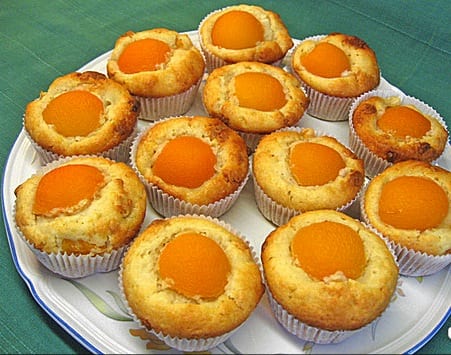
2. South German Potato Salad with Wieners
This Potato Salad is pretty easy to prepare and there are several things to add to the original recipe, like apple pieces or sunflower seeds, boiled eggs, etc.
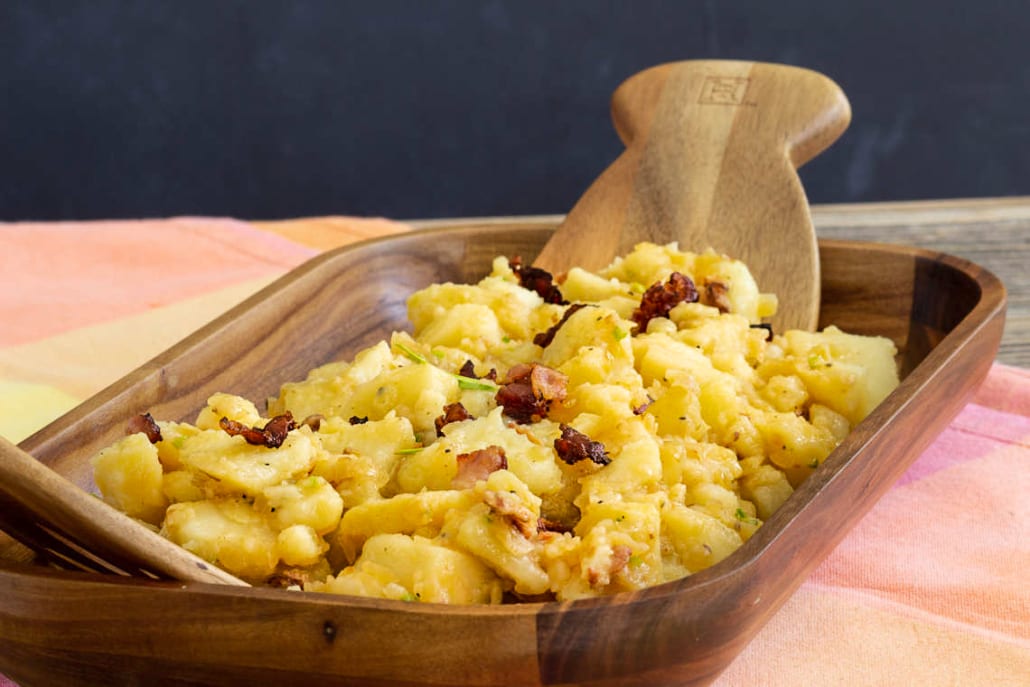
3. Egg Liqueur Cake – Egg Schnaps Cake
This cake has it all: It tastes fantastic and it looks fabulous and as a side effect one might feel a little tipsy after a slice or two. In my opinion its a sweet end for an Easter Brunch!
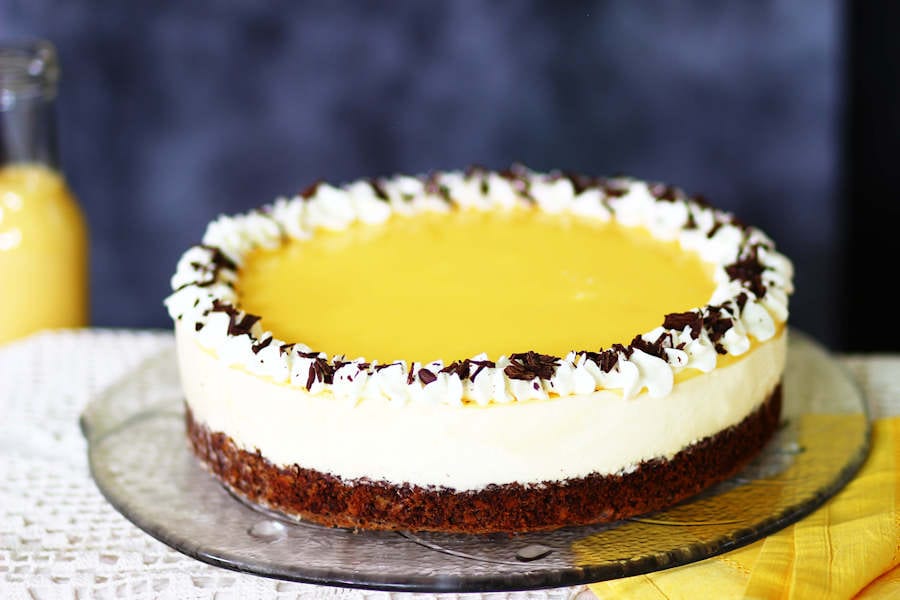
4. German Easter Striezel
Easy to bake Easter bread, which is very popular in Germany and Austria. Great for your Easter breakfast with jam of your choice on top.

5. Curry Eiersalat: Light German Egg Salad with Curry and Apples
This Curry Eiersalat is not your everyday egg salad. It’s fresh and different, featuring yogurt in the dressing to make it lighter, lots of crisp apples and warming curry spice.
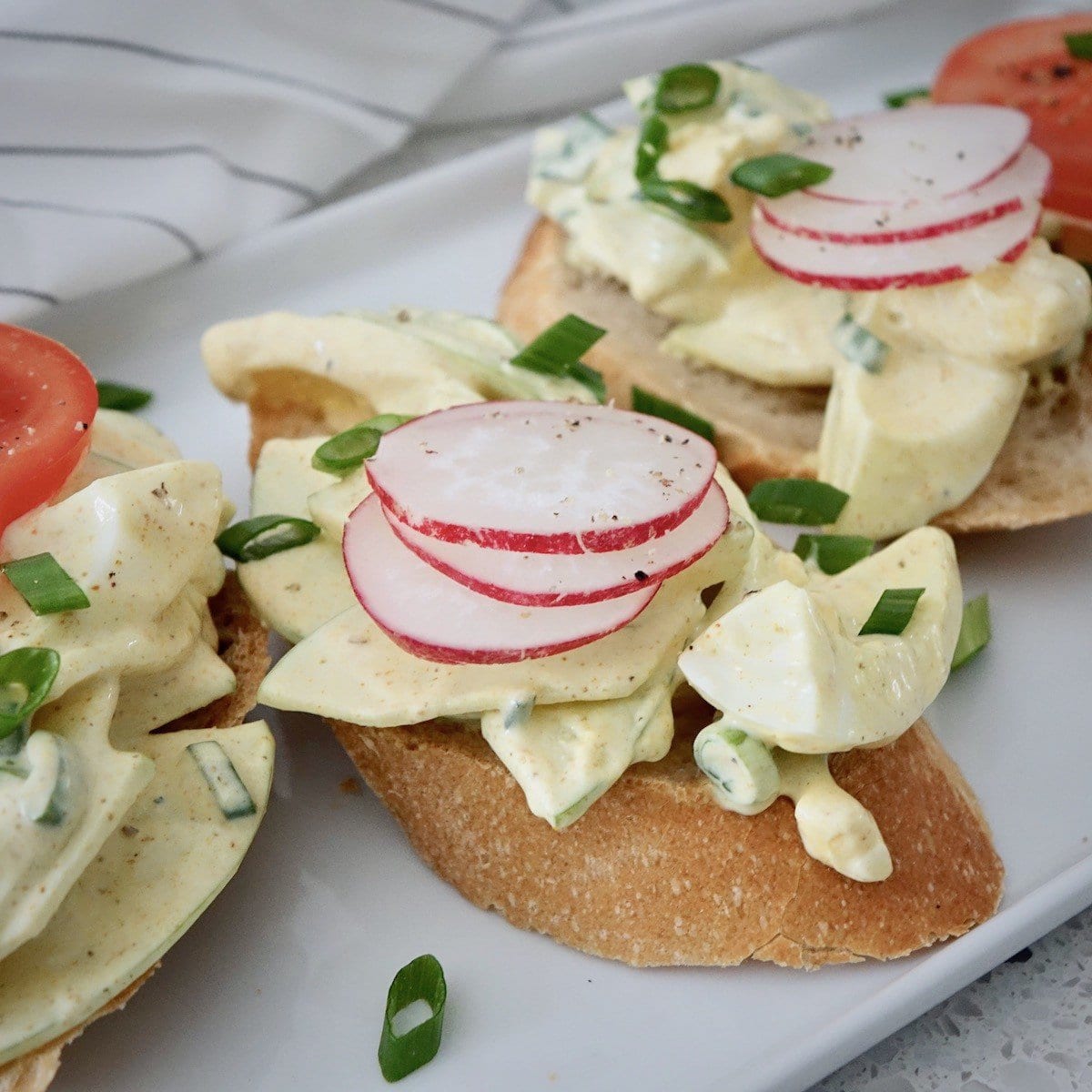
6. Spargel Quiche: German Quiche with White Asparagus
White asparagus is what all the Germans are craving right now, but you can find it in the US as well. Try this asparagus quiche and convince yourself.
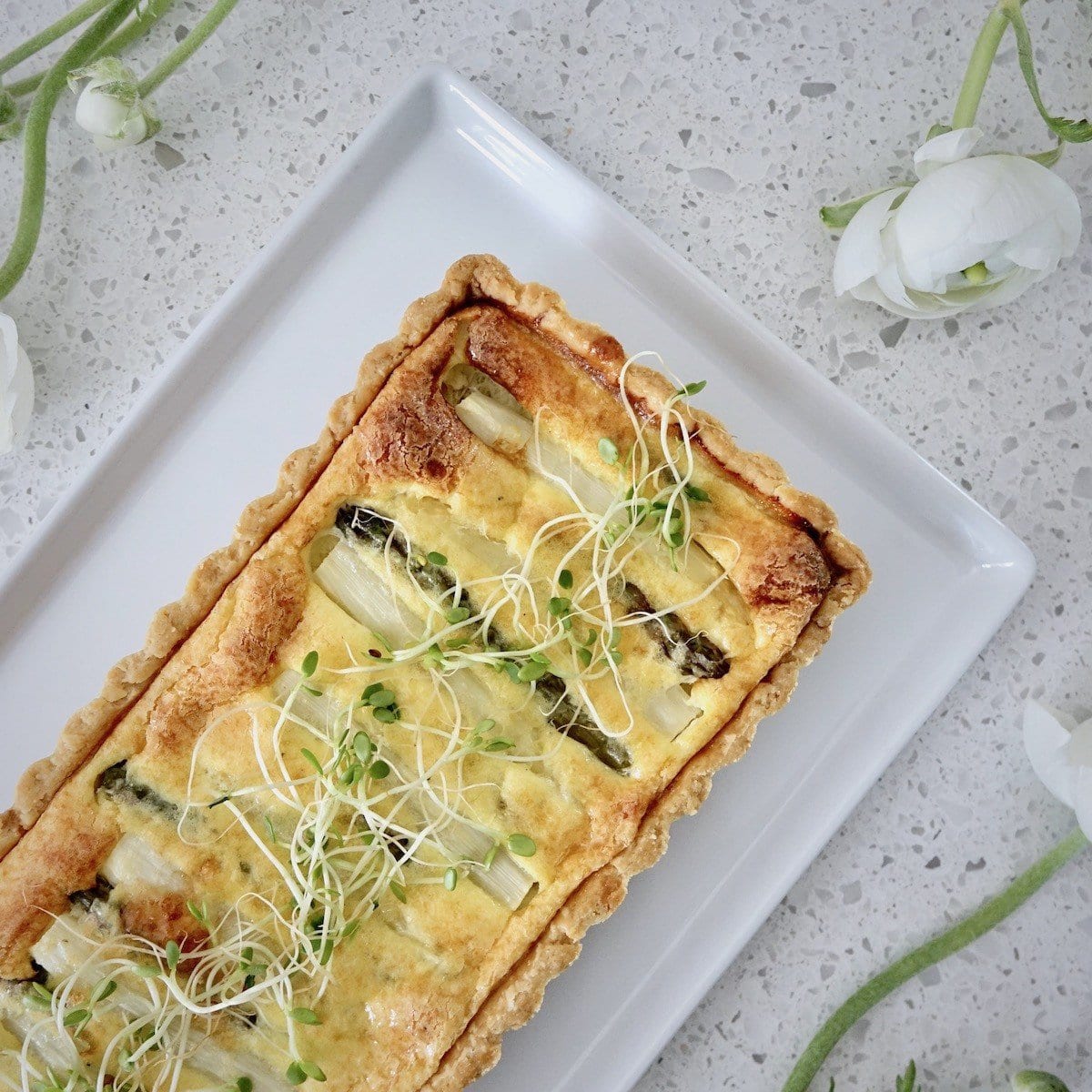
7. Herb Butter & Herb Quark
Herbs have a big part in the German cuisine. Two of the most used herb recipes are Herb Butter and Herb Quark. But let me tell you a little bit about the benefits of herbs up front.
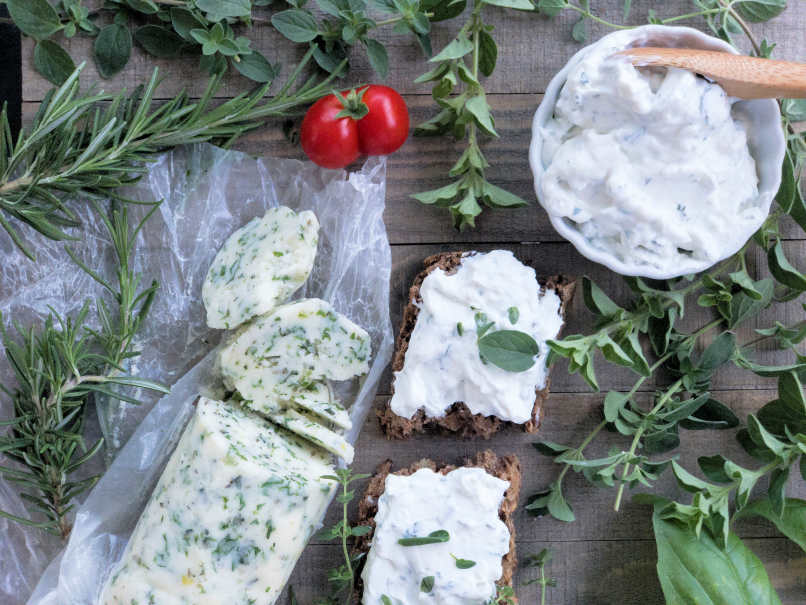
8. German Tartar Sauce or Remoulade Sauce – Remouladensauce
Never heard of “The” German Tartar Sauce? Well, some German dishes are very regional and those from Bavaria are best known by tourists.
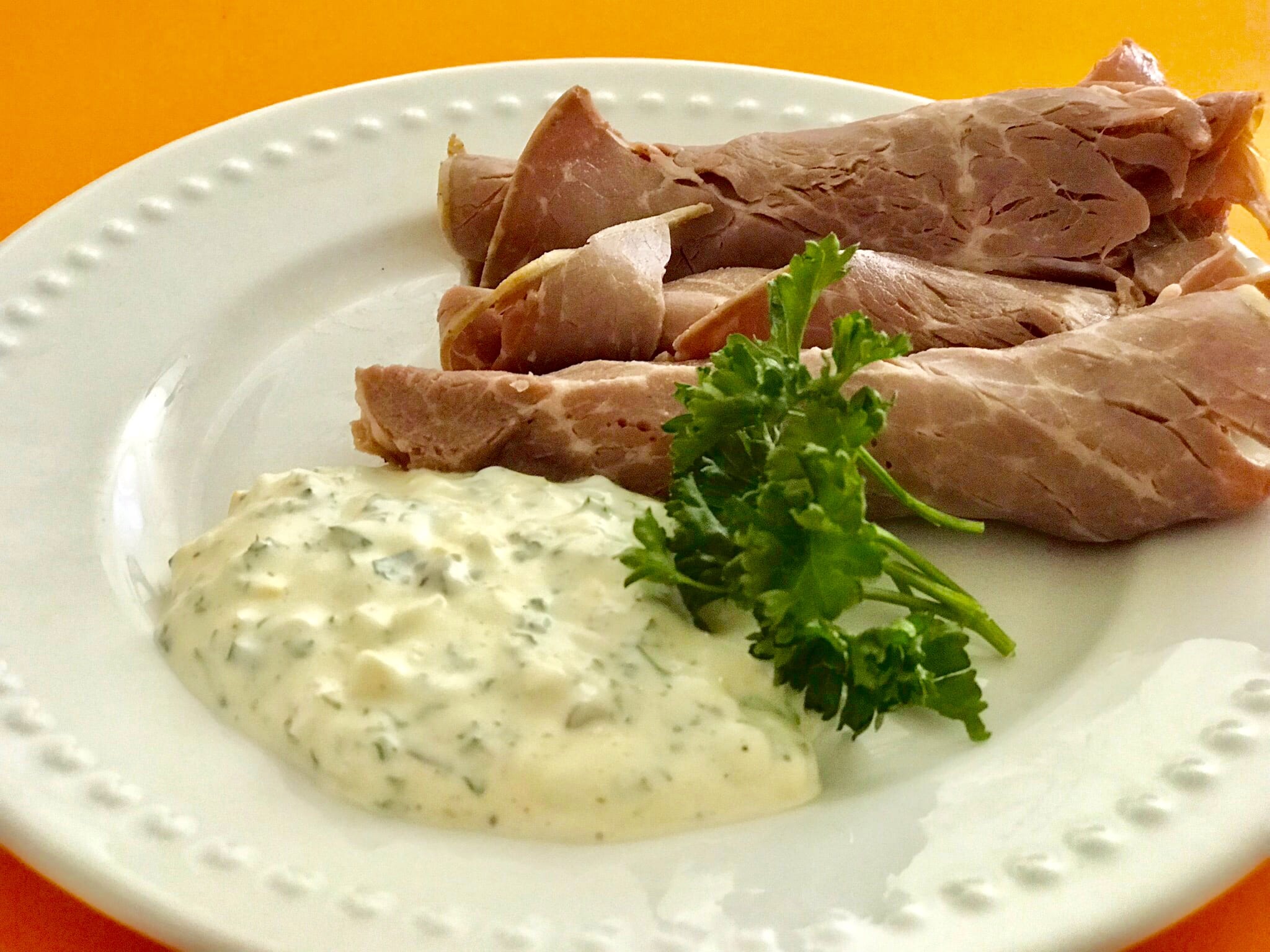
9. Quark-Brötchen – Easy Rolls
These quick rolls are made with “Quark”*. They are easy and fast – just perfect for a Sunday morning breakfast.
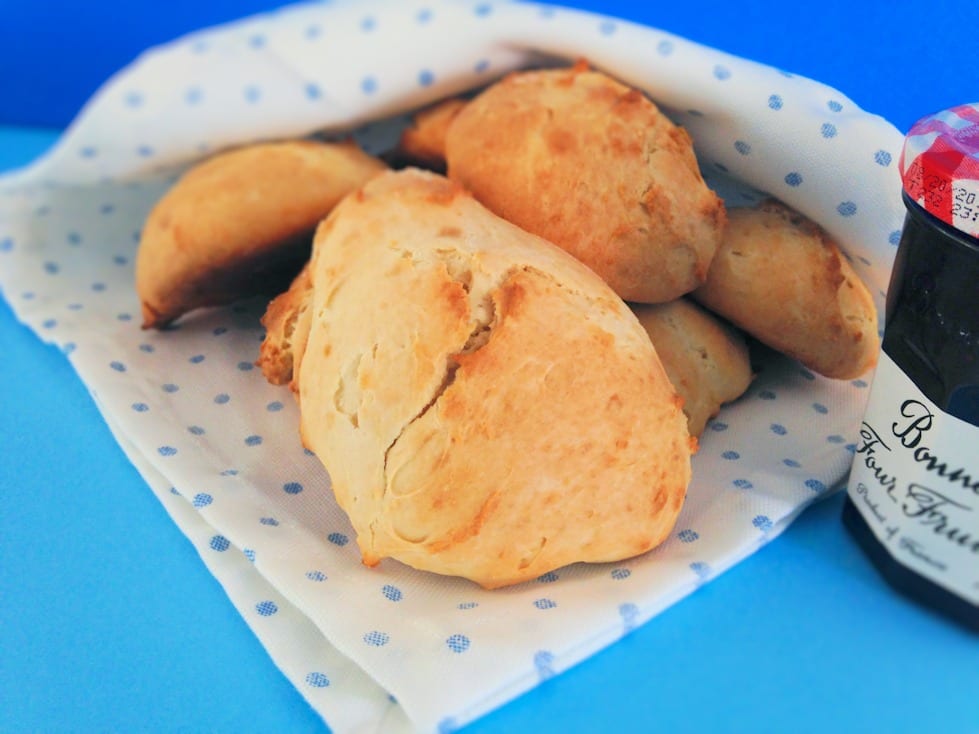
10. Oma SiegHilde’s Creamy Potato Salad
If you’re looking for potluck recipes for this Easter, consider making this creamy German potato salad featuring lots of potatoes, eggs, pickles and Wiener sausages!
